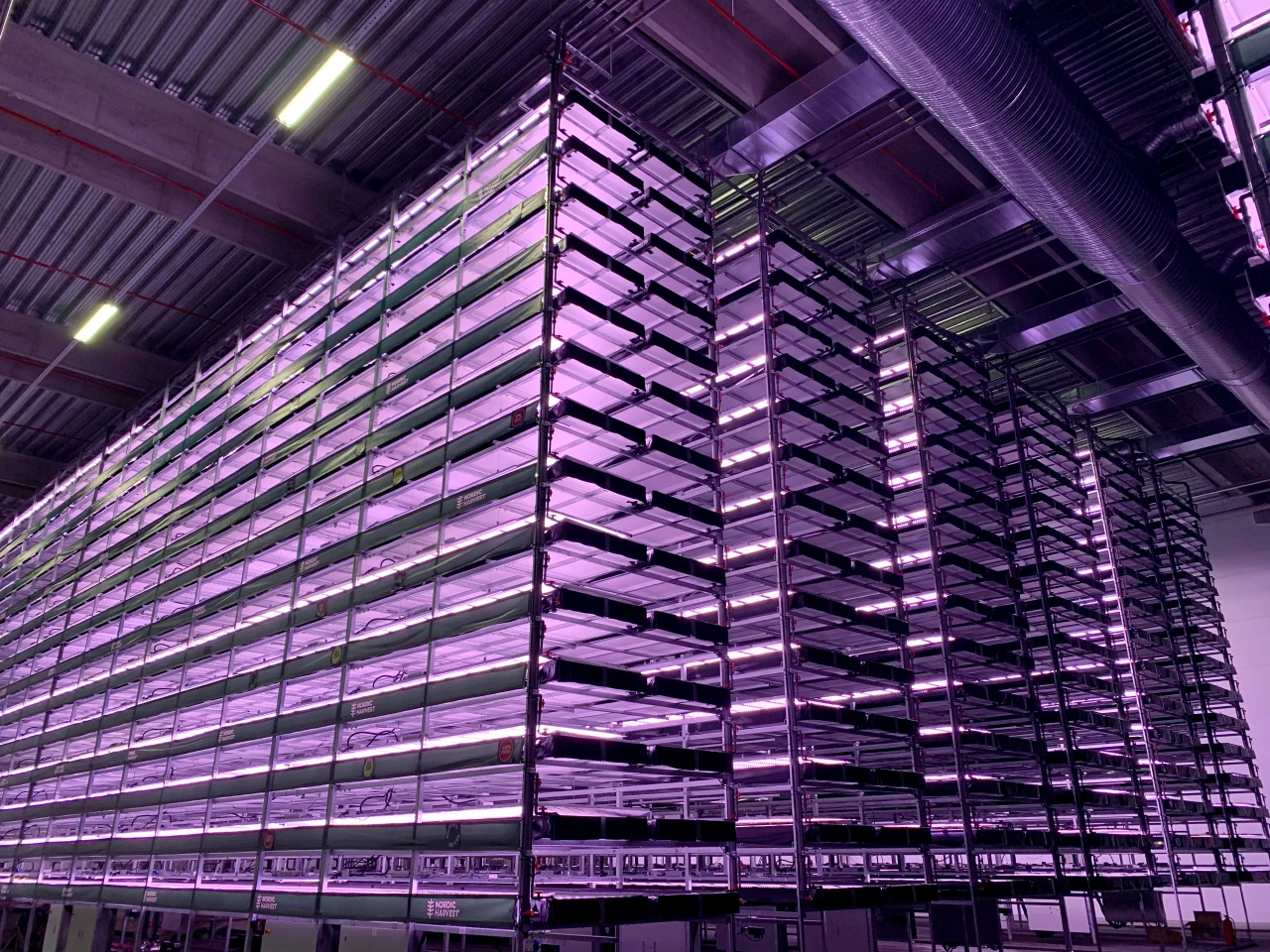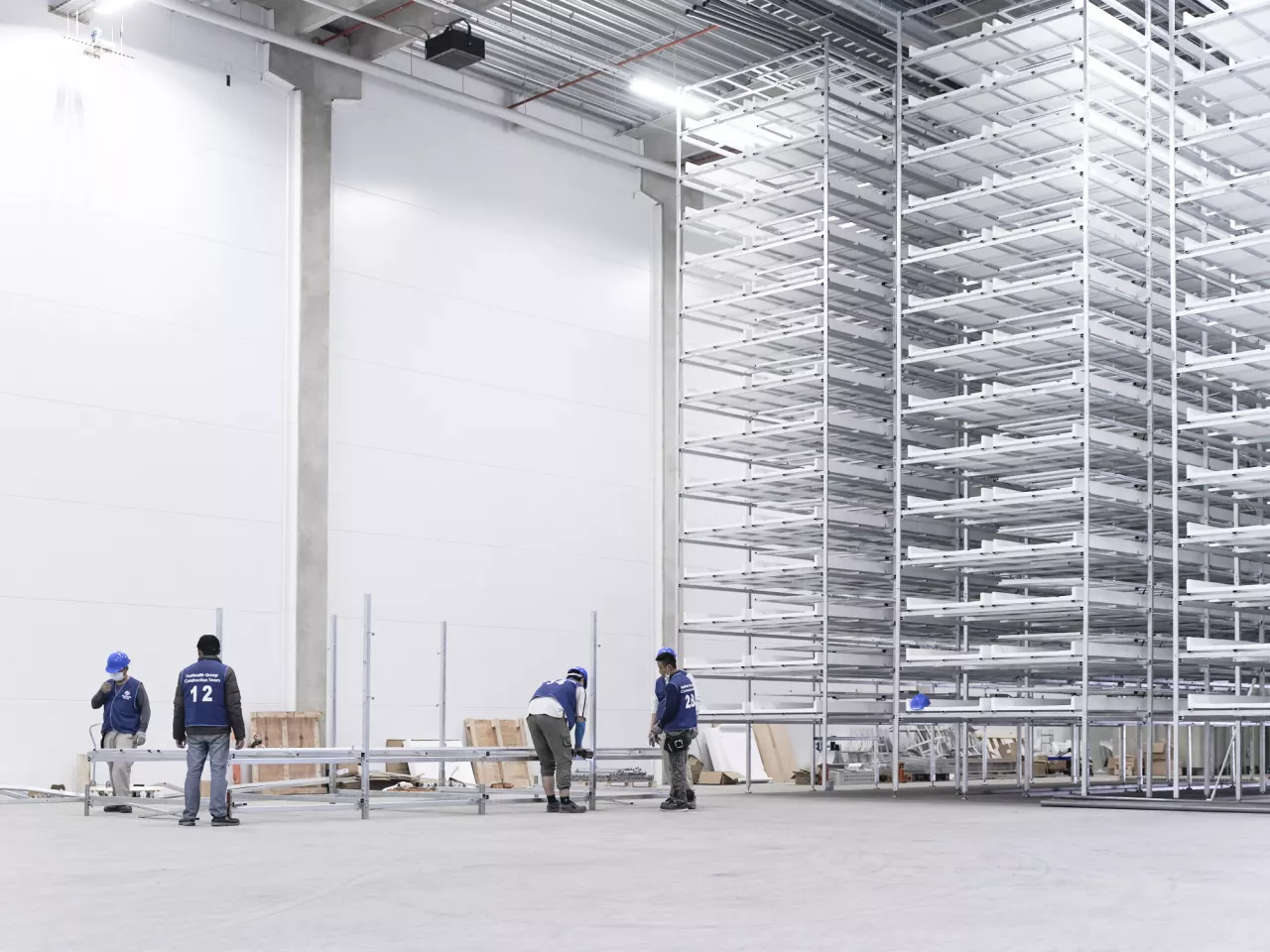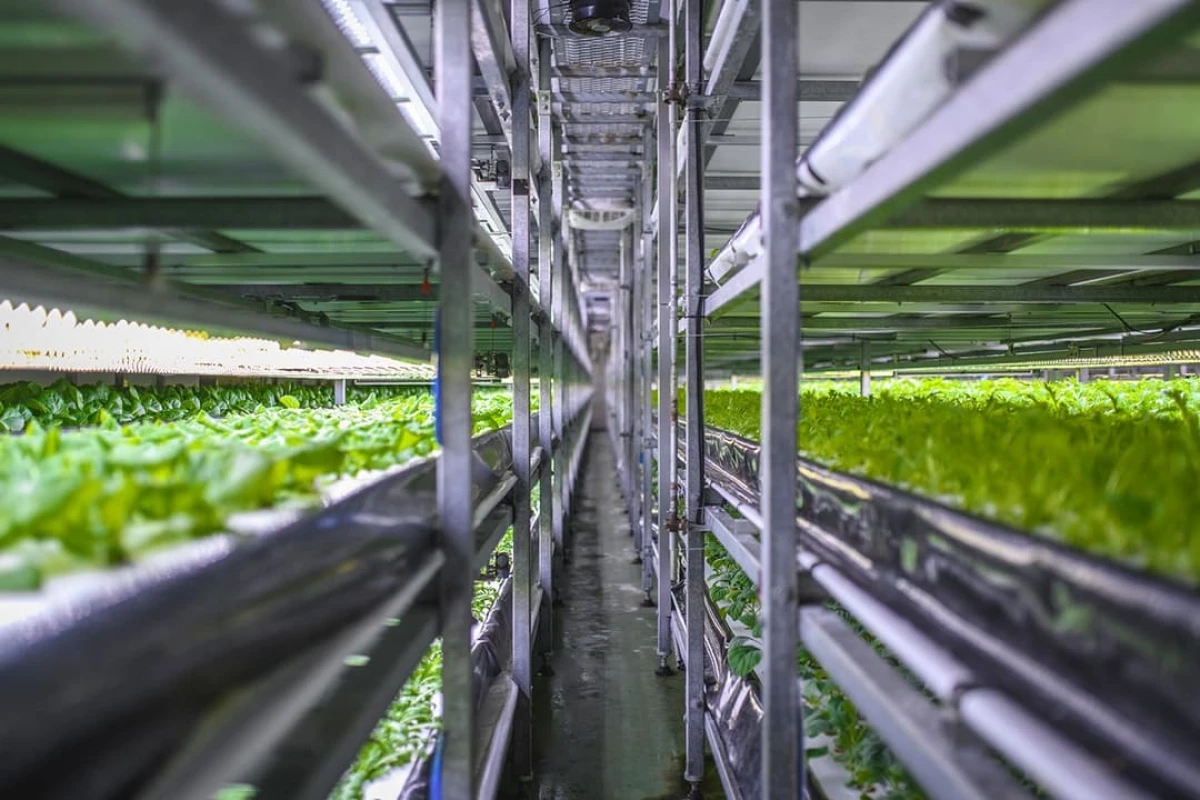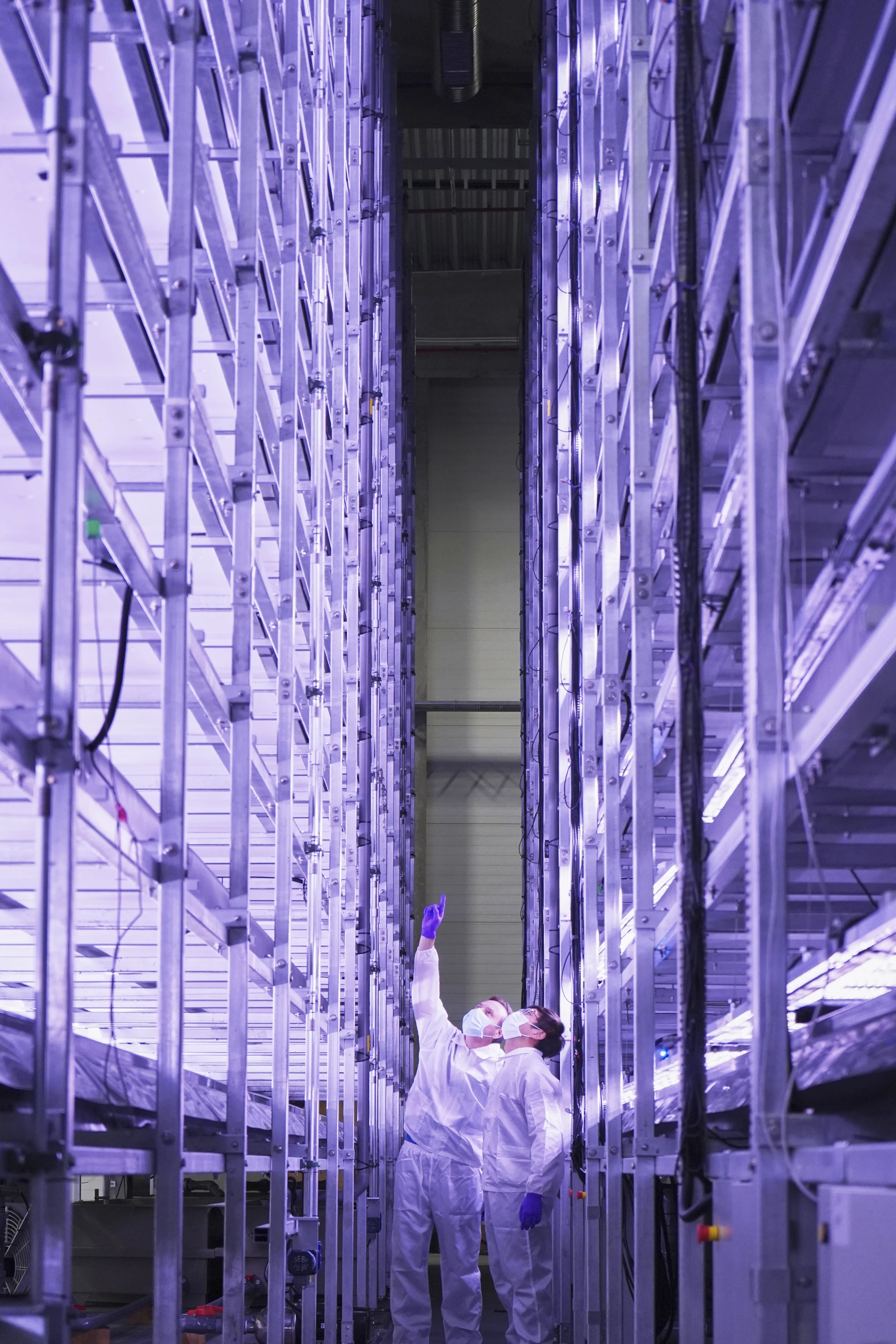The first phase of construction on one of Europe's largest vertical farm projects is now complete, and the first crop of organic salads and herbs is reportedly ready for delivery to local businesses.
The YesHealth Group and Nordic Harvest A/S started building the vertical farm in April, at northern Europe's largest wholesale market in Grønttorvet near Copenhagen in Denmark. The initial phase is expected to result in the production of some 200 tonnes of produce annually, but the facility will be expanded to 14 stories and 7,000 sq m (over 75,000 sq ft) during 2021, and production scaled up to 1,000 tonnes per year.

Salads and veggies such as baby spinach, mint, basil and cilantro are planted across several floors inside the building, shielded from weather extremes, with their roots in water and lighting and heating needs met by more than 20,000 LEDs powered by certified wind energy.
All of the organic seeds are sprouted in gel until the roots take hold, with nutrients coming from an in-house bio-fertilizer that's made from the fermented roots of previously harvested crops with added natural minerals. Spent water is filtered and reused, helping the setup use much less water than traditional farming. And the controlled environment also means that the production process does not involve the use of pesticides.

Each crop takes about 2-3 weeks from seed to fully grown, which means that harvesting is expected to take place 15 times per year. Nordic Harvest says that the first harvest has been reserved for use in commercial kitchens, but expects commercially available crops to appear in supermarkets early next year.
Meanwhile YesHealth will use data gathered by smart software to inform the designs of future vertical farm installations across Europe, Asia and the Middle East and North Africa.
Sources: YesHealth, Nordic Harvest







